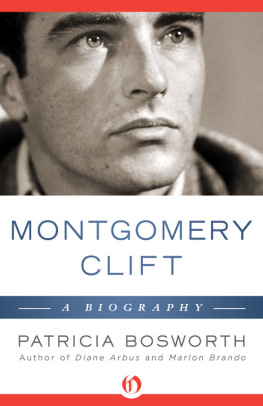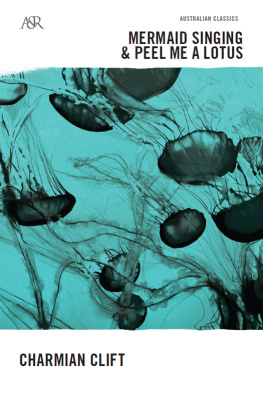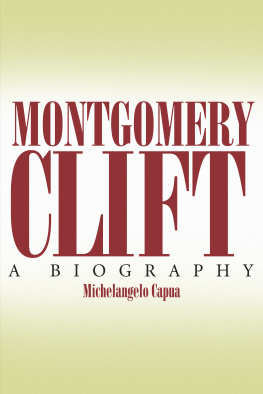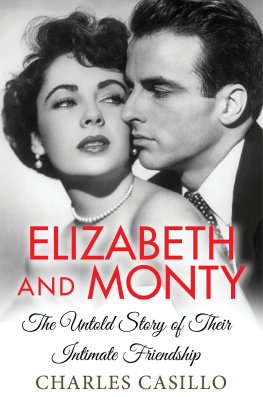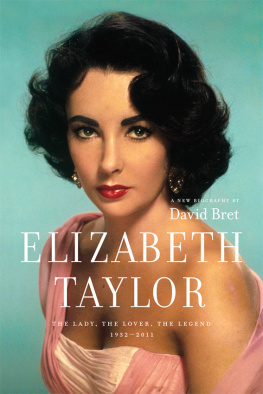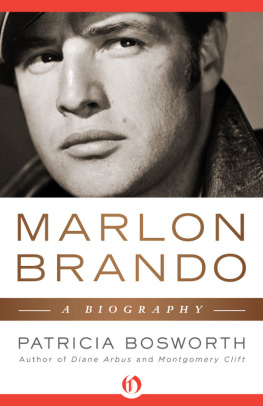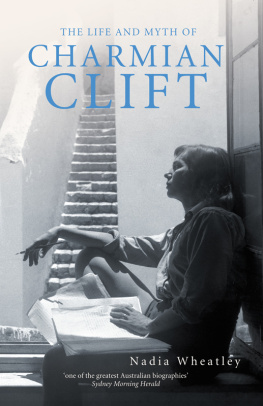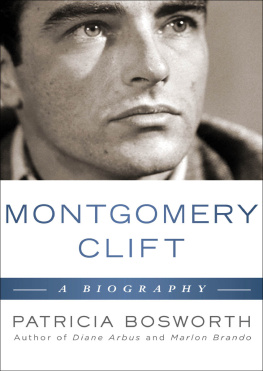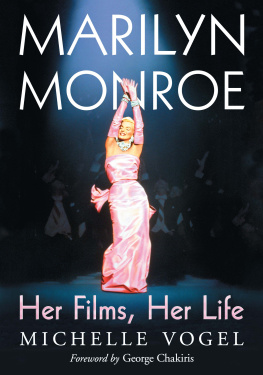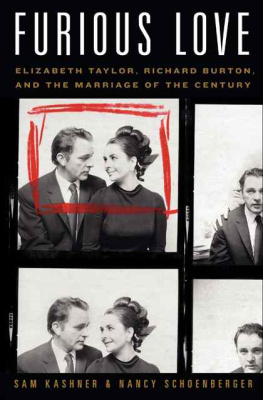
Montgomery Clift
A Biography
Patricia Bosworth

For my husband, MEL ARRIGHI, without whom this book could not have been written
Preface
WHEN I FIRST BEGAN researching this biography in 1973, I knew my focus would be a double one: I wanted to show how Montgomery Clift evolved into one of the definitive actors of the 1950s, but I also wanted to explore the inner life and tragic strivings of a man who remained an enigmatic figure even to his closest friends.
I tried to talk to every director, every actor, and many of the playwrights Monty worked with. I talked to most of his close friends. I talked to his agents, his lawyer, hi doctor, his barber, his former secretary; I spent one afternoon wandering through the rooms of his elegant brownstone.
Basically, I went back to primary sources. My greatest debt is to Montys older brother, Brooks. Brooks has saved everything that had to do with Montyphotograph albums, costumes from almost every movie, old letterseven one of the first cryptic notes Monty scribbled to his mother as a little boy, which stated: I love you. Why not?
Brooks helped me trace the origins of the Clift and Anderson-Blair families back five generations to Tennessee and Maryland, and helped me recreate Montys childhood in Europe and Chicago, his years on Broadway and in Hollywood, and his last years as a semi-recluse in New York.
Brookss recollections were supplemented by Montys twin sister, Ethel McGinnis, who also generously lent me her letters and photographs. I am deeply indebted as well to Montys mother, Sunny Clift, for her time and assistance.
For their interviews, letters, and constant encouragement I must thank especially Kevin McCarthy, Augusta Dabney, Jeanne Levy, Ned Smith, Lorenzo James, Robert Lewis, Bill Le Massena, and Jack Larson. They often alerted me to out-of-the-way source material.
To Paul Meyers and the staff of the Theatre Collection of New Yorks Lincoln Center Library of the Performing Arts and to the staffs of the New York Society Library and the Library of the Academy of Motion Picture Arts and Sciences in Los Angeles for their unstinting help, my thanks.
I would also like to thank Arthur Miller, Elia Kazan, Fred and Rene Zinnemann, Judy Balaban, Katharine Hepburn, Tennessee Williams, Maureen Stapleton, Nancy Walker, Lynn Tornabene, Irwin Shaw, Patricia Roe, Hope Lange, Ed Foote, Janet Cohn, Edie Van Cleve, Phyllis Thaxter, Morgan James, Patricia Collinge, the late Diana Lynn, Michael Kellin, Nora Ephron, Mike Maslansky, Harry Sions, Jim Goode, Francis Robinson, Herman Shumlin, Robert Parrish, Nancy Pinkerton, Rosemary Santini, Arline Cunningham, Lehman Engel, Mira Rostova, Eli Wallach, Inge Morath, Frank Taylor, Jim Bridges, Dolly Haas, Max Youngstein, Dr. Arthur Ludwig, Dr. Richard Robertiello, Mildred Newman, Fred Green, Deborah Kerr, Peter Viertel, Susan Kohner, John Weitz, John Huston, Eleanor Clift, Don Keefer, Karl Maiden, Franois Truffaut, Myrna Loy, Bill Kenly, Joanna Ney, Irene Sharaff, Sybil Christopher, Richard Burton, Dore Schary, Kay Brown, Phyllis Jackson, Audrey Wood, Donald Windham, Sandy Campbell, Sidney Davis, Harriet Van Horne, Norris Houghton, John Fiedler, Ellen Adler, Roddy McDowall, Bruce Robertson-Dick, Burt Padell, Ben Bagley, Anne Baxter, Danny Selznick, Giuseppe Perrone, Herman Citron, William Wyler, Herb Machiz, Thornton Wilder, Isabel Wilder, Ruth Gordon, Garson Kanin, John Dartig, Ed Epstein, John Springer, Bill Werneth, Shelley Winters, James Jones, Martin Swenson, Nicola Dantine, Helmut Dantine, the late Robert Ryan, Elaine Dundy, Judy Feiffer, Guy Moneypenny, Brooke Hayward, Bill Gunn, Marie Crummere, Gladys Hill, Paul Kohner, Robert Lantz, Shirley Lantz, Helen Merrill, Merle Miller, Edward Dmytryk, Stephen Boyd, Lucy Komisar, William Marchant, Dr. Lily Ottenheimer, J. William Silverberg, M.D. And for their editorial guidance, the late Tony Godwin, Dan Okrent, Tom Stewart and Gene Stone.
And lastly a brief note on my own impressions. I met Montgomery Clift when I was a young girl. My father, the lawyer Bartley Crum, helped organize Montys trip to Israel, and he also arranged for Monty to spend several days in the death house in San Quentin as part of his preparation for the killer he was to play in the movie A Place in the Sun.
Ill never forget Monty pacing back and forth across our living room, describing with accuracy and much emotion the convicts hed met in prison.
Twenty-three years later when I began studying his performances on film, I realized that Montys best work was always his remarkable paring down to the essentials of a character. In his movies Monty personified nonconformists and loners, who, in the midst of some violent crisis, seemed to be groping toward an understanding of themselves and the world: in so doing Monty always revealed some basic human truth.
That is the final pleasure in Montgomery Clifts acting, and it is the reason why I wanted to unravel the mysteries of his special artistry and set forth the story in a book.
Prologue
THE LITTLE DINNER PARTY on May 12, 1956 at Elizabeth Taylors home high in the hills of Coldwater Canyon was in honor of Montgomery Clift. Monty, as he was called by everyone who knew him, was Elizabeth Taylors dearest friend.
Monty Clift was at the peak of his career in 1956. The first actor to defy Hollywoods studio system and win, he had always refused to be typecast as a conventional romantic hero. Instead, in the preceding eight years, he had chosen to play a series of complex, original, offbeat characters in such movies as Red River, The Search, From Here to Eternity, and I Confess. He had already been nominated for three Academy Awards.
Now he was starring opposite Elizabeth Taylor in a gargantuan, wide-screen, Civil War epic entitled Raintree County, which MGM had budgeted at $5 million. The first movie Monty and Elizabeth had made together, A Place in the Sun, was already being described as the emblematic film of the 1950s. They hoped Raintree County would be as successful.
Monty and Elizabeth talked a lot about Raintree County during that dinner party on May 12. They kidded each other about how gorgeous and young the cameraman, Bob Surtees, was making them look in the first rushes; they talked about how they looked on film because there didnt seem much else to say. The party wasnt going very well.
The other guests, Rock Hudson and his secretary Phyllis Gates, and the actor Kevin McCarthy wandered around the sparsely furnished living room trying to keep conversation going while Taylors husband, Michael Wilding, lay on the not-too-clean white couch, the victim of a back spasm.
For part of the evening, Monty lounged on the floor. He had not bothered to shave, and a stubble of beard coated his cheeks; still, it was easy to see why he was called the most beautiful man in the movies.
Every so often, Elizabeth punctuated the conversation by putting another Sinatra record on the hi-fi. Monty kept jumping up to help her. He also poured the warmish ros which the Wildings had in endless supply, but Monty refused to drink any himself. He said he was exhausted.
At eleven-thirty he excused himself politely and left, accompanied by Kevin McCarthy, who was going to drive ahead of him in his car and guide him down the canyon to Sunset Boulevard. Montys parting words to the group were: Kevin has to help me down that mountain or Ill drive around in circles all night.
Next page
